April 1, 2016
Air Date: April 1, 2016
FULL SHOW
SEGMENTS

New York Confronts Exxon On Climate Risks
View the page for this story
Thomas DiNapoli iis the Comptroller of New York State and trustee of its $178.3 billion Pension Fund. He won an appeal to the Securities and Exchange Commission to force ExxonMobil to report the risks the oil giant will face from climate change and likely increased fossil fuel regulation. Comptroller DiNapoli tells host Steve Curwood that states and their pension funds can help shape industry’s response to global warming. (11:55)
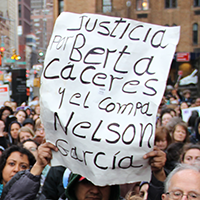
Dam Funders Halt Support After Murders In Honduras
View the page for this story
Two major financiers of the Agua Zarca dam project in Honduras have suspended their financial support in the wake of the high-profile murders of Berta Cáceres and Nelson Garcia, activists who opposed the dam. Peter Bosshard of International Rivers and host Steve Curwood discuss the potential far-reaching consequences for development international aid programs. (06:10)

Beyond the Headlines
/ Peter DykstraView the page for this story
Peter Dykstra’s weekly round-up with host Steve Curwood discusses the US lag in high-speed rail system development, the decline in workplace deaths over the past few decades, and how famed crime boss “Lucky” Luciano was never convicted of murder, but fined for one death he caused--by shooting a pheasant out of season. (03:50)
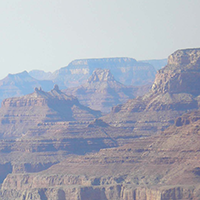
Clearing The View For The Grand Canyon
/ Laurel MoralesView the page for this story
Cement plants are big air polluters and in 2009 industrial giant Cemex wanted to build a new plant near the Grand Canyon, causing concern about increasing the haze that already plagues the national park. We revisit a report by Arizona Public Radio’s Laurel Morales, and host Steve Curwood catches up on the story with environmental engineer Bill Auberle who discusses current threats facing the iconic attraction and hopeful signs for its future. (09:05)
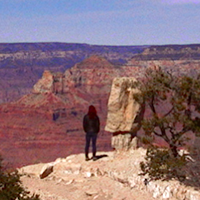
Sexual Harassment Blights National Parks and Forests
View the page for this story
Women in some divisions of the Forest Service and Park Service are now coming forward with disturbing stories of sexual harassment in the work place, ending public silence about years of abuse and official neglect. An investigation by the Inspector General of the Department of the Interior has now confirmed that there has been a long-term pattern of sexual harassment and a hostile work environment in Grand Canyon National Park. Host Steve Curwood speaks with journalist Kathryn Joyce, and Cheyenne Szydlo, a wildlife biologist who reported she was sexually harassed during her work in an isolated part of the Grand Canyon. (16:00)
Show Credits and Funders
Show Transcript
HOST: Steve Curwood
GUESTS: Thomas DiNapoli, Peter Bosshard, Bill Auberle, Kathryn Joyce, Cheyenne Szydlo
REPORTERS: Peter Dykstra, Laurel Morales
[THEME]
CURWOOD: From Public Radio International, this is Living on Earth.
[THEME]
CURWOOD: I'm Steve Curwood. New York State’s pension fund warns ExxonMobil it must declare the risks of climate change to shareholders.
DINAPOLI: It’s clear that the fossil fuel companies can’t ignore the reality of what’s coming so how will they anticipate the regulatory changes in a way that will contribute positively to dealing with the issue of climate change? If they don’t incorporate climate change considerations into their business plan, they’re going to be hurting our investment.
CURWOOD: Also, checking in on one of America’s most popular national parks.
AUBERLE: The Grand Canyon is a wonder of the world and it is also a wonder of the human heart and it certainly is to me, and I can only hope that the five million visitors a year to the Park have a similar heartfelt feeling about this incredible place.
CURWOOD: But even natural wonders can face threats and have a dark side. That and more this week, on Living on Earth. Stick around.
[NEWSBREAK MUSIC: Boards Of Canada “Zoetrope” from “In A Beautiful Place Out In The Country” (Warp Records 2000)]
ANNOUNCER: Support for Living on Earth comes from United Technologies – innovating to make the world a better, more sustainable, place to live.
New York Confronts Exxon On Climate Risks

The New York Pension Fund and other shareholders are calling on ExxonMobil to disclose the full risks that climate change and an anticipated transition away from fossil fuels pose to their stocks. (Photo: Mike Mozart, Flickr CC-BY 2.0)
CURWOOD: From the Jennifer and Ted Stanley studios at the University of Massachusetts Boston and PRI, this is Living on Earth. I’m Steve Curwood. Massachusetts and the US Virgin Islands are opening investigations parallel to one already begun by the State of New York to probe allegations that ExxonMobil suppressed its climate research and misled investors and the public. And the State of New York pension fund has won a ruling from the Securities and Exchange Commission that compels ExxonMobil to allow its shareholders to vote on a resolution to force the company to say how its profitability may be affected by climate change and related regulations. We’re joined now from Albany by the New York State Comptroller Thomas DiNapoli. He’s the trustee of the state's nearly 180 billion dollar pension fund, one of the investment groups that filed the shareholder resolution and won the appeal after Exxon tried to block it. Welcome to Living on Earth, Comptroller Di Napoli.
DINAPOLI: Great to be on your show.
CURWOOD: So how much does the state of New York retirement fund have invested in Exxon?
DINAPOLI: About $850 million at this point. You know, obviously the numbers fluctuate over time, but it's about $850 million right now.
CURWOOD: And who are the other sponsors of this shareholder resolution and how much do they have invested?
DINAPOLI: Well, there are a number of co-sponsors, but probably the biggest co-sponsor that we have is the Church of England. So when you accumulate all of the various sponsors, you're certainly talking about hundreds of millions of dollars in additional investment.

Protesters calling on the NY State Pension Fund to divest from fossil fuels altogether. (Photo: Maisa_NYC, Flickr CC BY-NC 2.0)
CURWOOD: So, in other words, together you folks bringing this resolution have got more than $1 billion invested in Exxon.
DINAPOLI: Oh easily so. Absolutely.
CURWOOD: So why did you decide to do this now?
DINAPOLI: We've been involved with the climate issue and environmental issues generally as an investor. We believe strongly that to protect the long-term value of our holdings we want to be invested in companies that have a focus on sustainability. We're a pension fund, so we've been around for over 90 years, we expect to be around forever. We have a long-term investment horizon. We're in effect a perpetual investor, so we always take a long-term view, and obviously the climate issue is emerging as one of global significance and those involved with the oil and gas fossil fuels are going to be directly impacted by the move to the lower carbon economy. Coming out of Paris Agreement and you see this international commitment over 180 the countries signing onto the goals of Paris, it's clear that the fossil fuel companies can't ignore the reality of what's coming. So how will they anticipate the regulatory changes in a way that will contribute positively to dealing with the issue of climate change? But as important to us as investors, is making sure the company will continue to be profitable and sustainable over the long term and if they don't incorporate climate change considerations into their business plan, they are going to be hurting our investment in addition to not helping the planet deal with this issue of climate change.
CURWOOD: What kind of response would you like to have from Exxon? What kind of plan to deal with the climate would like to have them lay out?
DINAPOLI: Well, we certainly want a recognition that this is an issue that they need to contend with. How do they intend to deal with issues like their reserves, you know the issue with stranded assets that's out there? How do they view that in terms of the impact on their bottom line, and in the whole energy area? There are opportunities now with with alternative and clean energy sources, new technologies, wind, solar...you go down the list of the new areas. Well, will all the expertise in financial power that ExxonMobil has, what are they doing to be making the transition to the kinds of energy technologies that will be part of the low carbon future where they can continue to make money for their investors and move away from what has been the traditional energy strategy that they have that clearly is going to have a limited horizon? So, how they spell all that out, we'll leave to them, but I think there is great opportunity for them to come up with a recognition of the problem and the challenge, assess how they can in the short run navigate through what that means for them as as a corporation, and I think most importantly, long-term how do they view their leadership role in the energy sector with the transition to a different kind of energy strategy, and how can they play a role in that? And obviously to the extent that ExxonMobil has assets around the globe as well, the impact of rising sea level...what will that mean in terms of their business operations? You're looking at it from a very short-term perspective of impacts, how are they preparing for the resilience of their own facilities?

Comptroller DiNapoli says the Paris Climate Agreement numbered the days of the fossil fuel business. (Photo: United Nations, Flickr CC BY-NC-ND 2.0)
CURWOOD: Now, usually shareholder resolutions fail. You have more than $1 billion invested in Exxon among you, but I think their market capitalization is more like 350 billion dollars. So what exactly is the point of bringing this action?
DINAPOLI: Well, we certainly want to have attention focused on ExxonMobil. They're becoming an outlier. A number of their peers have already agreed to incorporate climate change analysis into their corporate decision-making. We don't want ExxonMobil to be one of the big companies that's left out of the loop in terms of that very smart business strategy. We do hope whenever we file a resolution that they will see the light, if I can put it that way, and they will do the right thing. If they will not, and that seems to be the case thus far with ExxonMobil, we will bring it to a vote, and our experience has been on other issues and other shareholder resolutions, we may not win on the first round, but over time if it's a good position that's reflected in the wording of the resolution, you see an increase in the shareholder support for those resolutions and very often companies do come around and do choose to do the right thing.
CURWOOD: Now what other shareholder resolutions on these lines have you asked for at the other oil companies?
DINAPOLI: Well, similar in terms of climate change, that's an issue that we've been very concerned about. We've had some resolutions pending with Chevron as an example to require on their board of directors an independent board member who would have an environmental expertise to make sure that issues related to the environment not just climate change but other environmental issues as well would be at the forefront of corporate policymaking. We've also had resolutions dealing with deforestation in terms of the impact that that has on greenhouse gas emissions, particularly with those companies that are involved with the products that use a great deal of palm oil. Dunkin' Donuts is an example of a company that agreed to our resolution in that area. But our goal at the end of the day, as much as we like to do the right thing, our bottom line is that we are trying to provide retirement security for over one million New Yorkers and their families who are part of our retirement system and we think this kind of corporate engagement is a very very key part of protecting the long-term value of our investment.
CURWOOD: Well, why not simply divest fossil fuel equities? Recently Trillium Asset Management estimated that the Massachusetts state pension fund lost more than half a billion dollars from fossil fuel stocks in the last fiscal year. A number coal companies have filed for bankruptcy and at present environment the oil companies don't seem to be doing all that well either.
DINAPOLI: Well, that question comes up a great deal. I think we have to look up again the long term. For many years these investments have produced very significant returns and the positive impact on our bottom line. We actually were asked to do an analysis over the past five years of how much did we lose by our investments, and we looked at our figure, holdings in all those of our companies on the Carbon 200 list. We actually found that we have made about $1.8 billion, so I think sometimes those that advocate for divestment, they just look at the value of a stock or a price of the stock today versus X number of years ago without realizing that our investments or not just measured on the value of the stock year to year. There are trades that go on, there are dividends that are paid. So we actually are still seeing a net positive in terms of our investment.

Superstorm Sandy showed the New York area how costly climate change can be. (Photo: George Pankewytch, Flickr CC BY 2.0)
You're absolutely right in regards to coal, that's been a different picture, but our coal holdings are certainly much smaller and really have been going down. We announced not too long ago what I think was a more effective strategy than divestment, we announced that we had created a customized low carbon index fund and we moved $2 billion of our public equity holdings into this fund. It had an exclusion with regard to pure play coal companies so there's no coal company in this index, and what we're going to do over time is wait; those companies that do have a responsible strategy when it comes to the issue of climate change and environmental considerations and we're going to incentivize those companies that are doing the right thing by putting more money towards them and take away money from companies that aren't doing the right thing. I think that kind of approach will be more protective of our long-term interest as an investor and will start to incentivize a strategy that will encourage companies to do the right thing. If we sold all of our investment in ExxonMobil, for example, ExxonMobil is not about to go out of business tomorrow because we are pension fund is not invested with them, and we would lose that opportunity to be at the table to introduce the kind of shareholder resolution, to push the company in the right direction to deal with climate change, we would lose the opportunity to have that voice to try to have them do the right thing.
CURWOOD: Before you go, tell me why it's important for states to take the lead in these sorts of matters.
DINAPOLI: Well, certainly from a New York perspective, having gone through major weather events, I mean Superstorm Sandy is an obvious one, New York City obviously has got miles and miles of coastline, Long Island is a significant population center, lower Manhattan, the global capital for finance - a lot of that are is built on fill that goes back to colonial times - so rising sea levels will certainly have a real impact on us and in a very very direct and a very very personal way. So I think to the extent that public pension funds in addition to wanting to make money understand the public arena, and states, particularly those that have a coastline, are very vulnerable to the rising sea levels that are a consequence of greenhouse gas emissions and climate change. We really do need to be part of the vanguard saying, “this is an issue that we all need to be engaged and focused on.”

Comptroller Thomas P. DiNapoli. (Photo: courtesy of the Office of the New York State Comptroller)
When I was in Paris and being there when the climate talks were going on, some of most compelling stories that you heard were from those that live on island nations that already have been seeing rising sea level impacts, and it really drove the point home that for many of us in this country we are not so far removed from that, and I do think that many in other parts of the globe are ahead of us in the US, in terms of having a sense of urgency about this issue. So I'd like to see the states be in the lead. I think pension funds have a unique role to play and our plan is to not to let up on this. We're protecting our investment and certainly we're protecting the place where we live. For New York to continue to be the great state that it is, we need an economy that's not going to be disrupted by severe weather events that result in tremendous infrastructure damage, the need to spend more money on rebuilding and on resilience, the litigation and insurance costs that come with this. The impacts of not dealing with this issue are way beyond just looking at how does it affect our investment from the perspective of the pension fund. There are many other economic and financial negatives to our not dealing with this issue.
CURWOOD: Thomas DiNapoli is the Comptroller of the State of New York and trustee of the state and local employees pension fund. Thanks for coming on the show.
DINAPOLI: Steve. Thank you. It was great to talk with you.
CURWOOD: An Exxon official says shareholders will receive information about management’s views of the resolution in the company’s proxy statement. And a spokesperson says the allegations of climate misinformation “are politically motivated and based on discredited reporting by activist organizations.”
Related links:
- Press release from New York State Comptroller on the SEC ruling against ExxonMobil
- NY State Comptroller announces $2 billion low-carbon emissions index investment fund
- 17 State Attorneys General vow to work together to litigate against climate pollution from the fossil fuel industry
- The Rockefeller Family Fund votes to divest from fossil fuels
ANNOUNCER: Support for Living on Earth comes from the Gordon and Betty Moore Foundation, and from the Water for Food Institute at the University of Nebraska, working to ensure a water and food secure world. Registration for its global conference open through April 15th. Information at Water-for-Food-dot-Nebraska-dot-E-D-U. And from Wunder Capital, an online investment platform that allows individuals to invest in solar projects across the U.S. More information and account creation at WunderCapital.com That's Wunder with a 'U'. Wunder Capital, Do well and do good.
[MUSIC: Blue Meadow, “Cloud 9,” 39th & 8th, Jamal Reed/Densen Curwen, WBA Records]
CURWOOD: Just ahead...life and death as a green activist in Central America.
Stay tuned to Living on Earth.
[CUTAWAY MUSIC: Jeremy Garrett, “Peace King,” I Am a Stranger, Jeremy Garrett/Chris Pandolfi, Sugar Hill Records]
Dam Funders Halt Support After Murders In Honduras

People gathered at a rally in New York City calling for justice for slain Honduran environmental activists Berta Caceres and Nelson Garcia. (Photo: Natalie Jeffers / UMWomen, Flickr CC BY-NC-ND 2.0)
CURWOOD: It’s Living on Earth, I’m Steve Curwood. In March we reported on the death of Honduran environmental activist Berta Cáceres. Well, just a week after her murder, Nelson García, another activist from her group, the Council of Indigenous and Popular Organizations of Honduras or COPINH, was also killed. COPINH opposes the Agua Zarca dam project, which would have cut off Cáceres’ Lenca people from their river, and many speculate that opposition may have led to her murder. Joining us now to discuss the dam project and the murders is Peter Bosshard, Executive Director of International Rivers. Welcome to Living on Earth, Peter.
BOSSHARD: Thank you.
CURWOOD: So, first tell me about this second murder. Who was Nelson García and why was he killed?
BOSSHARD: Nelson García was a rank-and-file activist with COPINH, this organization that defends indigenous and other marginalized people in Honduras. He was supporting the local community against a land grab. 150 families were living on a plot of land that had been illegally sold by the major of the small town, Rio Lindo, and on the day that they were going to be evicted, he helped these families out, helped them to set up a protest and on the way home to his own house he was met by four gunmen and killed.
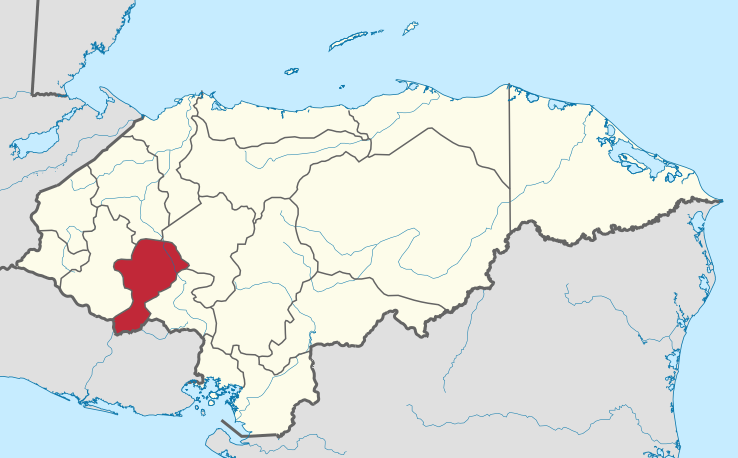
The Lenca people live in part in the Intibucá Department of Honduras, where the Agua Zarca dam is proposed to be built. (Photo: TUBS, Wikimedia Commons CC BY 2.0)
CURWOOD: What if anything did Nelson García have to do with opposition to Agua Zarca dam or other dam projects in Honduras?
BOSSHARD: In 2009, there was a military coup in Honduras and a right-wing government came to power after that, and since that time the government has sold off lands and the rights to rivers to private investors at a massive scale. The indigenous peoples who lived in these territories, they have no say in this matter even though under international law that they would have a right to free prior informed consent, kind of a veto power over projects on their territories. The Agua Zarca dam is such a private investment where a river was offered to private investors by the government against the resistance of the indigenous Lenca people, and similarly on this other river where this land grab happened where Nelson García was killed, there is plans for hydropower companies to come in and built these projects again against the resistance of the local people. It's not in the vicinity of the Agua Zarca dam, but it's the same mechanism where the natural resources are turned over to private investors against resistance of people who have lived off these resources and make good use of them for many generations.

The mountains of the Intibucá Department of Honduras (Photo: John Donaghy, Flickr CC BY-NC-ND 2.0)
CURWOOD: I understand that recently two of the major European financiers of the Agua Zarca dam project decided to pull their support. Who were they?
BOSSHARD: Two of the three main financiers of the Agua Zarca dam are public financial institutions from the Netherlands and from Finland. FMO and FinFunds, they operate with the public money to invest in supposed developing projects in southern countries. They operate almost like a private bank at arms length from the government often without too much public oversight. So particularly, FMO, the bigger among the two institutions, the Dutch financier has been involved in a series of similar projects in Guatemala, in Panama, which also have created a lot of resistance by indigenous peoples where local activists were also killed to make way for these projects so they have operated away from the limelight but they really have quite a bad track record when it comes to respecting indigenous rights and human rights more generally.
CURWOOD: Why did they pull out in this case?
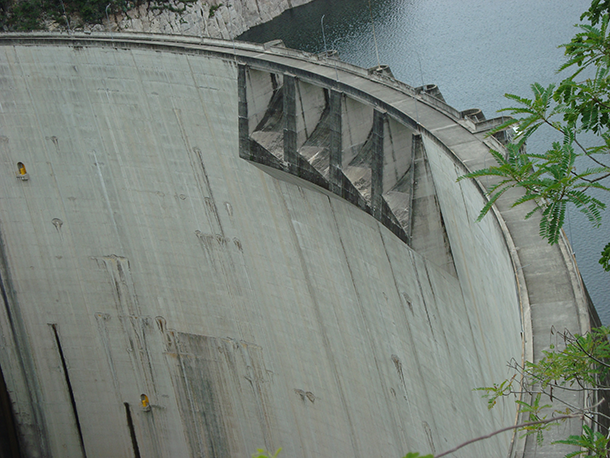
El Cajón Dam is a hydroelectric power plant in Honduras and the fifth highest dam in the Americas. (Photo: Dwwhyd, Wikimedia Commons public domain)
BOSSHARD: The banks have not pulled out yet. They suspended their support after Berta and Nelson were killed, simply under the immense public pressure. My hunch is that probably the governments, particularly the Dutch government realized that this was just too embarrassing. The Netherlands and Finland typically have quite strong policies on human rights and here are these actors which operate with taxpayers’ money and become accomplices in such human rights abuses, so if we don't keep up public pressure they may well continue to fund this project, but chances are that they will have to pull out eventually.
CURWOOD: How important is their support if they eventually pull out? Would that stop the Agua Zarca project?
BOSSHARD: The two European financiers have contributed $20 million out of total loans of $44 million, so almost half of the funding. Most of the loans have not been dispersed yet. The Agua Zarca dam has not progressed very far into construction and so if they pulled out at this stage, it would be difficult for the dam builder to replace them particularly after what has happened.
CURWOOD: What about the United States? In particular, what role has USAID played in financing this or other projects like it in Honduras?
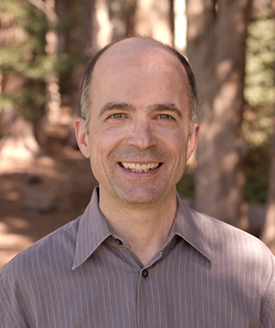
Peter Bosshard is the Interim Executive Director of International Rivers. (Photo: courtesy of International Rivers)
BOSSHARD: USAID doesn't typically fund large dams any more. They have not given any support to the Agua Zarca dam, but we noticed that they have a project where they work together with the dam builder to make agriculture more productive in the region. We think it should obviously be scrutinized after what has happened. Of course, Honduras is part of the corridor through which a lot of trucks get smuggled to the United States and so there is USAID for the Honduran military which has been an accomplice in many of these human rights violations, and so that's our main concern when it comes to the US role in Honduras.
CURWOOD: Peter Bosshard is the Executive Director of International Rivers. Thanks for joining us today.
BOSSHARD: Thank you, Steve.
Related links:
- International Rivers
- Finnfund statement: “Disbursements to Honduran hydropower project currently on hold”
- Dutch development finance agency : “FMO suspends all activities in Honduras effective immediately”
- About U.S. assistance to Honduras
- Track the funding sources of Agua Zarca dam and other international projects on BankTrack
- Posts by Peter Bosshard on the International Rivers blog
[MUSIC: The Blind Boys Of Alabama (with Robert Randolph and The Family Band) “Many Rivers To Cross,” Higher Ground, Jimmy Cliff, Real World Records]
Beyond the Headlines
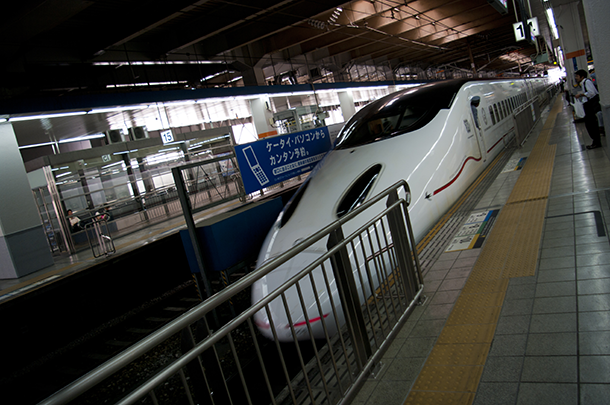
Japan’s high-speed rail trains were ranked by the travel website GoEuro as the best in the world. (Photo: Martyn Jones, Flickr CC BY-NC-ND 2.0)
CURWOOD: Let’s join Peter Dykstra of Environmental Health News, EHN.org and DailyClimate.org to go beyond the headlines now. Peter’s on the line from Conyers, Georgia. Hi there, Peter.
DYKSTRA: Hi, Steve, when it comes to high-speed rail service, the US is number – er -- 19. In a recent study of 20 nations’ high-speed rail resources the US finished 19th, behind Turkey and Uzbekistan and quite a few other nations. You know Amtrak’s Acela service in the Northeast is our only example of high-speed, and it’s on the low-end of high-speed, which is usually defined as 150 MPH travel on a consistent basis.
CURWOOD: Given the state of passenger rail here in America, that’s not that surprising. Hey, who’s number one?
DYKSTRA: Number one is Japan, followed by South Korea, China, France and Spain. Compare the high-speed trains from Beijing to Shanghai, a little over five hours for an 800-mile trip with about 35 trains a day and the cheapest ticket is $86 US. If you try that same distance here, New York to Atlanta, it’s $147, it takes fifteen hours, and there’s only one train a day.
CURWOOD: Well that’s kind of embarrassing but in the current state of politics here I don’t see it changing anytime soon.
DYKSTRA: Except maybe for one change for the worse. The only high-speed project in development right now would run from San Diego and LA to San Francisco and Sacramento. It’s losing support due to cost overruns, and now a proposed statewide ballot initiative would drain billions in rail funding to fill reservoirs for farmers by building bigger dams.
CURWOOD: Well anything for more water is going to get a vote in California, Hey, what do you have next for us?
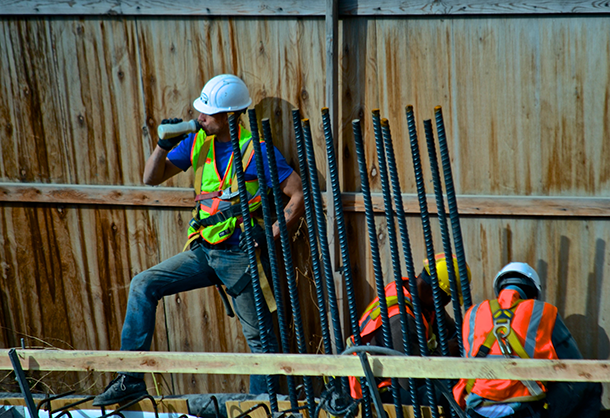
Fewer than 13 workplace deaths happen every day in the United States, a dramatic decrease from 38 per day in 1970. (Photo: David McSpadden, Flickr CC BY 2.0)
DYKSTRA: I’ve got a bit of good news on the chemical safety front. Workplace deaths in the U.S. have taken a big fall, from about 38 workers a day in 1970, to less than 13 per day last year according to the Bureau of Labor Statistics. Deaths linked to exposure to toxic substances have seen a similar drought, but that’s not the whole picture. The AFL-CIO publishes an annual study called “Death on the Job,” and it concludes that 150 people a day die from the long-term consequences of hazardous working conditions.
CURWOOD: So must be things like lung diseases, toxic chemical exposure, and more?
DYKSTRA: Right, the AFL-CIO report also lists fatalities by state, with North Dakota as the deadliest place to work. Steve, you’ll be pleased to know that Massachusetts consistently ranks as one of the safest states to work in.
CURWOOD: Well, we have no oil refineries here or big mines though we do have a nuclear power plant and fishing is always risky. Still, we’ve never lost an employee at Living on Earth. Hey, what how about your state, Georgia?
DYKSTRA: I didn’t look to see where Georgia was and I really don’t want to know, because we usually make the low end of the top fifty in most things.
CURWOOD: Except maybe home cooking. Hey what do you have in the history vaults for us?
DYKSTRA: Well we’re gonna talk about the notorious gangster Charles “Lucky” Luciano and the environment.
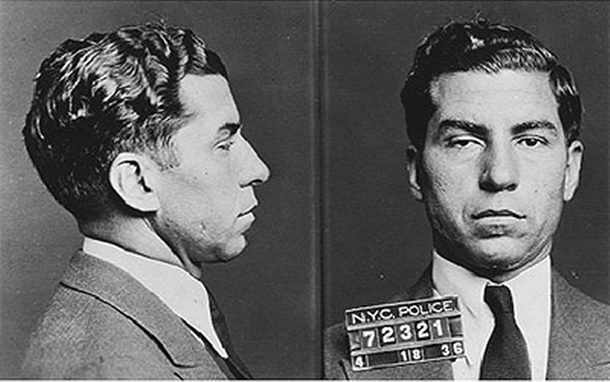
Charles “Lucky” Luciano was an East-Coast mob boss who never served time for murder, but was fined $50 for killing a pheasant. (Photo: New York Police Department – Public Domain)
CURWOOD: Well this ought to be interesting.
DYKSTRA: Luciano helped put the “organized” in organized crime by bringing rival crime families together to cooperate rather than just keep killing each other off. But in the meantime, Luciano and his crew were widely suspected of killing scores, if not hundreds, of rival gangsters, loan sharks, pimps, bootleggers, dealers, button men, jamokes and wise guys.
CURWOOD: And where does the environment come into this?
DYKSTRA: Well here it is. Despite being one of the most feared men in a bloodthirsty empire, there was only one killing that Lucky Luciano ever paid the price for. During this week in 1929, Lucky carried out a hit on a ring-necked pheasant in upstate New York, and was promptly arrested and fined $50 for hunting out of season. This is according to the book “Boardwalk Gangster” by Tom Newark.
CURWOOD: So I guess both Mr. Luciano and the pheasant were unlucky that day.
DYKSTRA: Right.
CURWOOD: Hey, Peter Dykstra’s with Environmental Health News EHN.org and DailyClimate.org. We’ll talk to you soon Peter.
DYKSTRA: Thanks a lot Steve, Talk to you soon.
CURWOOD: And there’s more on these stories at our website, loe dot org.
Related links:
- San Jose Mercury News: “Kill high-speed rail and spend the money on reservoirs? Proposed California ballot measure sparks debate”
- Grist: “The U.S. is just pathetic on high-speed rail”
- Boston Globe: “Chemical exposure deaths on the job getting rarer”
- Workplace Death Report from AFL-CIO
- Boardwalk Gangster: The Real Lucky Luciano, by Tim Newark
[MUSIC: The Irish Rovers, “Pheasant Plucker’s Son,” Wasn’t That a Party, traditional English, Cleveland International Records]
Clearing The View For The Grand Canyon

The Grand Canyon on a hazy autumn day. (Photo: Kirbyfest, Flickr CC-BY-NC 2.0)
CURWOOD: Here at Living on Earth, we believe Earth day should be celebrated for the entire month of April, and we’ve made a point of revisiting some stories from years past to find out what’s happened. Today, we’re heading out west to one of the glories of our National Park System, the Grand Canyon. Back in 2009, we broadcast a story detailing plans by cement giant Cemex to build a new kiln just 50 miles upwind from the Grand Canyon – plans that were raising concern about the dust and pollution from the plant that could harm that icon. Here’s part of that report from Laurel Morales of Arizona Public Radio.
[BIRDSONG]
MORALES: For 18 years it’s been Carl Bowman’s job to guard the 100-mile view at Grand Canyon. He leans over what looks like a large telescope to check the day’s visibility on an air monitor.
BOWMAN: On our very best days you know those days that just take your breath away you look across the north rim’s 10 miles away. The colors over there are bright. The shadows and textures are nice and crisp.
[TOURISTS OUTDOORS]
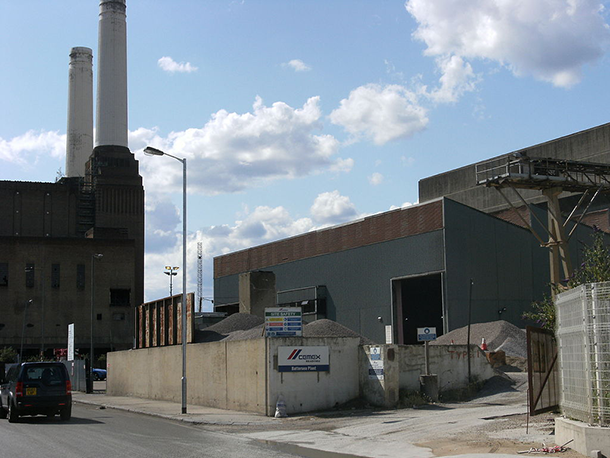
A proposed Cemex cement plant was rejected after many foresaw the hazy Grand Canyon views it might create if approved for operation in nearby Seligman, Arizona. (Photo: Mark Ahsmann, Wikimedia Commons CC BY-SA 3.0)
MORALES: Nearby tourists pose for pictures at the popular overlook and take in the glorious crags, cliffs and brilliant red rocks in every hue.
BOWMAN: It feels almost like you can reach out and touch it. But as the haze starts to build up the colors start to get muted the textures flatten out. On those haziest days you can look across and see the north rim but what you’re seeing is just this looming blue mass on the other side of the Grand Canyon.
MORALES: Weather, wind direction and smog blown in from as far away as Los Angeles and Mexico can each affect the view. Bowman says the view has noticeably improved over the last two decades thanks to the Clean Air Act. The law forced two power plants that flanked the Canyon to make big changes. One installed expensive scrubbers; the other closed. But the proposed cement plant could be a step backwards.
BOWMAN: Any time there’s a proposal for a new facility close to the park, of course we’re concerned, because when we look at the pollution problems that we see within the park most are caused by air pollutants that are actually generated upwind from us.

Some of Bill Auberle’s favorite camping spots are located on the North Rim of the Canyon. (Photo: Stacy Egan, Flickr CC BY 2.0)
MORALES: Cemex plans to burn coal and petroleum coke to fuel the plant. Coke is a byproduct of oil refining that looks like asphalt run through a coffee grinder. Cement plants also roast limestone in kilns five times hotter than pizza ovens. Each step can emit pollutants, especially nitrogen oxide, sulfur dioxide and particles. Northern Arizona University environmental engineer Bill Auberle spends a lot of his time monitoring the air quality at Grand Canyon. He says Cemex needs to provide the details.
AUBERLE: My concern is this that the Clean Air Act of the United States says that no man-made air pollution shall impair visibility at the Grand Canyon National Park and other parks. Zero! We’re not to be fouling the air at Grand Canyon.
CURWOOD: Well, it was seven years ago that Laurel Morales reported that story, and we were interested to know what happened, so we called up Bill Auberle again. He’s retired from teaching at the university but still works as an environmental engineer and keeps a keen eye on the canyon. Welcome back, Mr. Auberle.
AUBERLE: Thank you very much. It's good to be back.
CURWOOD: So what happened with Cemex?
AUBERLE: Cemex withdrew their permit to build near the Grand Canyon, in part because of the environmental threat and perhaps because of the economy at the time. Alternatively, a new plant was built more distant from the canyon in which Cemex has an interest so their demand for Portland cement was met, but in a way that was much less intrusive on the canyon.
CURWOOD: So, what's the air quality like at the canyon now? We heard Laurel's piece about the careful air quality records being kept by the park authorities.
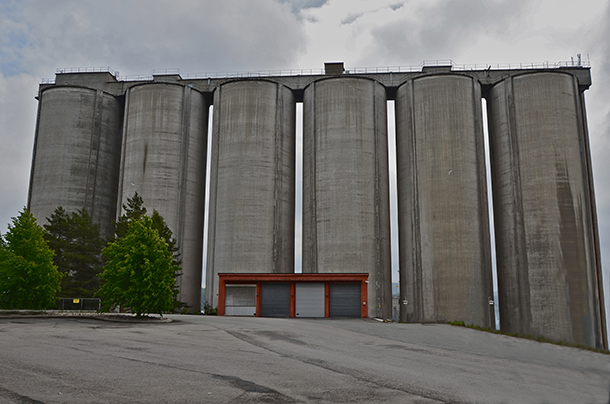
A series of cement factory silos. (Photo: Astrid Westvang, Flickr CC BY-NC-ND 2.0)
AUBERLE: Yes, the National Park Service has records of air quality at the Grand Canyon for several decades and some of those measurements continue, but not all of them, and unfortunately one of them that no longer continues is visibility at the Canyon which is one of the most precious resources. Visitors expect to see the splendor of the visibility across the many miles of the canyon, and that's no longer measured in terms of visual range. What is measured are gases and microscopic particles at the Canyon so we have indicators of air quality, but we don't have a good measurement of visibility, for example.
CURWOOD: It's been a little while since I've been to the Canyon, but there's a fair amount of haze there still, I think.
AUBERLE: There is persistent haze at the Canyon, and that's born out by these indicators that are continued be measured in the air quality system at Grand Canyon National Park. It is also born out by visual observations of the five million visitors plus each year that unfortunately often experience haze at Grand Canyon.
CURWOOD: So, looking ahead, what's the outlook for air quality there?
AUBERLE: I'm cautiously optimistic about the future of protecting air quality in the region. We are producing and requiring ever-cleaner motor vehicles, automobiles, and the like. We also have secured long-term commitments from industries in the region. Copper smelters, coal-fired power plants and other manufacturing activities and in coming years - and admittedly in some cases a couple of decades - we will see those sources significantly cleaned up or retired and the Canyon and its air quality will be the beneficiary.
CURWOOD: Now, what about the other environmental threats to the Grand Canyon? What remain today?
AUBERLE: Fortunately or unfortunately, the Canyon is located in the region of the Southwest where there are a great many important natural resources ranging from the largest Ponderosa pine forests in the southwest United States where logging is exceedingly important industry to underground resources of uranium, limestone, other precious metals and water, which of course is very dear to those of us in the southwest.
CURWOOD: Well, there's been a significant drought in Arizona for, what, how long?
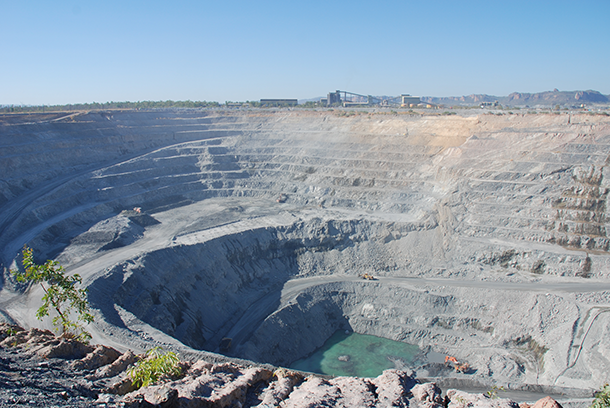
Uranium mines are another industrial activity that poses a threat to the Canyon (Photo: Alberto Otero García, Wikimedia Commons CC BY 2.0)
AUBERLE: Well, the current drought goes well back into the 1990s and seems to be never-ending with sporadic years occasionally when it gets a little more moist. But in general this long-term drought persists and appears to be going to continue to persist according to the meteorologists and the climatologists. And with climate change we will become even drier than we are today.
CURWOOD: So what does that mean, that lack of water in the region?
AUBERLE: Well, it has a great many impacts on the ecosystem of the region as you can appreciate. The surface streams, the flow in surface streams, is getting lower and lower. The rain and snow that replenish our groundwater from which we get much of our potable water in the region, the groundwater elevations are going down as we continue to pump that more and more for human needs, and clearly that will come to an end at some point just because there's not enough water.
CURWOOD: I understand that there's some mining that goes on there. Uranium and and other things and I guess an interest in increasing that mining.
AUBERLE: Yes, these important natural resources continue to be mined. We have active uranium mining in the region, that's been going on for many many years. It's an important part of economy. But no new mining is being permitted, there's a moratorium in place that precludes additional uranium mining until a much broader assessment is done of the environmental threats to the Canyon.
CURWOOD: Now, there's some conservationists who would like to see the area around the Grand Canyon protected as a national monument. What you think of that idea?
AUBERLE: Yes, indeed. There's a bill in Congress to encourage the president to establish a new Grand Canyon national monument that would encompass much of the region around the Grand Canyon. I think monument designation has a great deal of merit so long as current uses of the area are allowed to continue under monument designation, such as camping, hiking, hunting, and fishing. They're very important outdoor activities in the region. And the good thing about the Antiquities Act allows the president to create a national the monument is it allows for flexibility as to what this continued usage can be.
CURWOOD: So you been going to the Canyon for several decades. How's your sense of wonder when you see it each time?
AUBERLE: The Grand Canyon is a wonder of the world. It's also a wonder, I think, to the human heart and it certainly is to me. It's just an incredible experience and I can only hope that the five million visitors a year to the park have a similar heartfelt feeling about this incredible place that I've experienced nowhere else in the world.
CURWOOD: Bill Auberle is an environmental engineer in Flagstaff, Arizona. Thanks much for the time with us today, Bill.
AUBERLE: You're quite welcome. Glad to do it.
Related links:
- Original LOE Canyon Air Pollution Story
- National Park Service Air Quality Data
- Map of the Grand Canyon
[MUSIC: Gary Burton/Chick Corea/Pat Metheny/ Roy Haynes/ Dave Holland, “Country Roads,” Like Minds, Gary Burton, Concord Records ]
CURWOOD: Coming up...Danger in the backcountry of national parks and the forest service—sexual harassment from co-workers. That's just ahead on Living on Earth. Stay tuned.
ANNOUNCER: Funding for Living on Earth comes from United Technologies, a provider to the aerospace and building systems industries worldwide. UTC Building & Industrial Systems provides building technologies and supplies container refrigeration systems that transport and preserve food and medicine with brands such as Otis, Carrier, Chubb, Edwards and Kidde. This is PRI, Public Radio International.
[CUTAWAY MUSIC: Gary Burton/Chick Corea/Pat Metheny/ Roy Haynes/ Dave Holland, “Country Roads,” Like Minds, Gary Burton, Concord Records]
Sexual Harassment Blights National Parks and Forests

Back country workers report a culture of sexual harassment has pervaded some divisions of the Forest Service and the Park Service for years. (Photo: Emily Kassie, Huffington Post Highline)
CURWOOD: It's Living on Earth, I'm Steve Curwood. The national parks are a classic all-American vacationing spot, and a place of refuge. But for some employees of the park service, that idyllic image has been shattered by sexual harassment they experienced while on the job. A Department of Interior investigation released in January found a “hostile work environment” in Grand Canyon National Park’s River District, and dozens of female employees of the California region of the Forest Service have also complained of sexual misconduct on the job. Kathryn Joyce recently investigated the issue for The Huffington Post Highline magazine and joins us now. Kathryn, welcome to Living on Earth.
JOYCE: Thank you so much for having me.
CURWOOD: Now, why are women in these kinds of outdoor jobs particularly vulnerable to inappropriate sexual contact or advances?

The National Park Service and the Forest Service were founded on a military model, still reflected in their current hierarchies. (Photo: Danny Lee, Flickr CC BY-NC 2.0)
JOYCE: The nature of these jobs is that they are isolated. These are backcountry jobs, so these are women who are working deep in the forest, at the bottom of the Canyon, out in very remote places. The other issue is historically these are fields that have long been quite resistant to fully including women, both the forest service and the park service were founded on a really kind of traditional idea of masculinity. There was a military model in both of them that's still reflected in the hierarchies today. As women were starting to come into these rules even 100 years ago there were moments of backlash and we've seen that continue throughout recent decades as well.
CURWOOD: Tell me the story of one of the women you spoke with about this.

The Forest Service is still dominated by men, especially in its firefighting divisions. (Photo: U.S. Department of Agriculture, Flickr CC BY 2.0)
JOYCE: Well, one of the stories that moved me particularly was that of Denise Rice, a prevention fire officer on the El Dorado National Forest in central California. And at one point about five years ago she was being groomed for a promotion, something she been working on for many years, and then somebody in a supervisory role above her began to take an inappropriate interest in her. He started by making inappropriate comments and over the course of three years that she alleged would move on to unwanted physical assaults including groping and cornering her in bathrooms or small offices, behavior that almost appeared to be like stalking her around the forest, constantly keeping track of where she was and showing up in these very remote locations. And she for several years held off on making a report of the sexual harassment that was going on because she had been working for over a decade at that point in this extremely male-dominated industry. She had a keen sense that women who are trying to prove themselves the equals of their male colleagues did not file, they do not complain about these things, they wouldn't ever show weakness in front of the guys, and so she just was bearing this for three years until it finally got to the point where she had enough.
CURWOOD: Let me guess that, once she complained, that promotion went out the window.
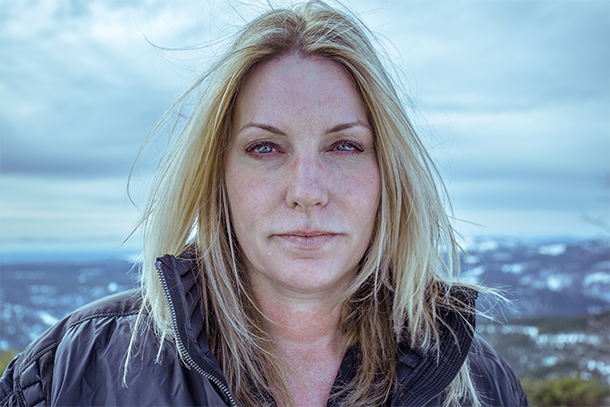
Denice Rice told authorities that she was repeatedly sexually harassed by a supervisor during her work as a wildfire prevention officer with the California region of the Forest Service. (Photo: Emily Kassie, Huffington Post Highline)
JOYCE: Yeah that is that her perspective and that of both her supervisor and one of her colleagues, that because she filed she has since had her whole career ladder removed. There really is no more option for her to promote. So, there's both kind of the issue of harassment and assault and then also the retaliation issue that people who end up speaking up about this can find their careers completely stalled.
CURWOOD: In this California region of the Forest Service, how many complaints have there been?
JOYCE: I wasn't able to find an exact number of that, and the reason for that is that this is an issue that goes back several decades. In the late 1970s, there was the first of what have now been four class-action lawsuits regarding the California forest service. Women were really being held back from any sort of professional roles. Women who applied to the forest service were being channeled into clerical and administrative positions, so there was this first-class action lawsuit that called on the Forest Service to commit to making sure that 43 percent of all employees across all pay grades were women.
So there was this hiring spree that went on throughout the early 80s, but as a lot of men felt that they were being pushed out of roles or being passed over for roles in favor of a gender quota, there began to be a lot of resentment, and there are things like women reporting that they were out in the field and male colleagues rolled a burning log towards them, or that there was a woman who would be the only woman on her fire crew and all of her male colleagues were joking about raping her in her sleep. So in 1995 there was a second class-action lawsuit that was dealing with incidents of harassment and assault particularly as a form of backlash against the women who had come in under that first-class action lawsuit's consent decree. There have since been two more, one is currently under way now. So, all of these lawsuits have revolved around making sure that women can find a full opportunity for career in the Forest Service and three of the four have revolved around sexual harassment and assault, so there have been hundreds if not thousands of these cases.
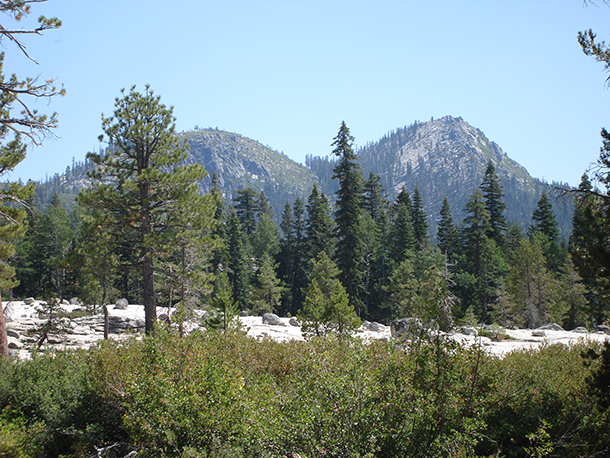
Rice’s job involves preventing forest fires in California’s Eldorado National Forest. (Photo: Mark Doliner, Flickr CC BY 2.0)
CURWOOD: Kathyn, you also wrote about sexual harassment issues in the Grand Canyon river district. Of course, that's under the Department of Interior, the National Parks Service. Tell me why did the Department of Interior feel that there was a need to ask its Office of Inspector General to investigate claims of sexual harassment in that district?
JOYCE: Stretching back to the early 2000s women had been making sexual harassment claims and they felt that nothing was being done. And then in 2014 there were two women who had both previously filed reports who ended up being let go themselves on what many felt were trumped up allegations of misconduct, and so this came to be quite clear to me, at least, as a form of retaliation. And so when that happened 12 women and one man wrote a letter to Secretary Sally Jewel of the Department of the Interior requesting that she investigate what they cast as a culture of wild sexual harassment and then also retaliation against women who complained and then to their credit, the Department of the Interior moved on this pretty quickly. Within about a month they begin an investigation and they broadened out their investigation from the 13 people who originally complained to identify 22 other either witnesses or additional victims and the investigative report that was released in January of this year, it found that there was a pretty widespread pattern of sexual harassment and then also mismanagement of these complaints.
CURWOOD: That’s writer Kathryn Joyce. We’ll be back with her in a few moments. One of the women Kathryn interviewed is Cheyenne Szydlo, who worked in Grand Canyon National Park during 2006. She’s a wildlife biologist and says that during a river trip there she was harassed by a boatman employed by the park’s River District. Cheyenne told us what happened.

Cheyenne Szydlo, a wildlife biologist, says that she was sexually harassed on a river trip during the 2006 season when she worked for Grand Canyon National Park. (Photo: Emily Kassie, Huffington Post Highline)
SZYDLO: I had been hired to study the Southwestern Willow Flycatcher. It's an endangered songbird. And historically it had nested in Grand Canyon. It hadn't been seen for three years and I was determined to find it.
CURWOOD: So I take it things didn't go so well. Tell me what happened to you.
SZYDLO: Well he was the boatman, so his job was to take me down the river. From the very first day shortly after we got on the boat, he just started making really inappropriate comments about my clothing, about me, and at first I just kind of laughed uncomfortably, and then it was really uncomfortable and tense. At one point, I told him to stop. He got really frustrated that I wasn't responding to him and was starting to get angry as well, and so the punishment was he stopped taking me to my survey site.
CURWOOD: Really.
SZYDLO: Yeah, I was supposed to survey for the bird at dawn, and one morning he slept in until 10 o'clock. Now I was just waiting for him to take me to my site and there was no apology for anything and the final site I was supposed to survey he just said, "No, we're not going there."
CURWOOD: Cheyenne, with all this going on, you must of thought of getting out of there. How possible would this have been?
SZYDLO: Well, for the first half of the trip it wasn't. There's steep canyon walls, even if you did hike out in the desert in the middle of nowhere, but we stopped at Phantom Ranch, four days into the trip, and Phantom Ranch is really the only place that you could hike out. While the harassment had been going on before we got there, I really wanted to get to the lower half of the river because it hadn't been surveyed the entire season. It was the one opportunity that that part of the river was going to surveyed, but I also knew I was like if I'm going to file a complaint against this person, no one's going to take me seriously if I don't hike out at the first opportunity. And so eventually pride won. I was like, I'm not to let this guy make me fail at my job.

Szydlo’s objective on the river trip was to look for signs of the Southwestern willow flycatcher, an endangered bird that was believed to be extinct in the part of the Grand Canyon that she surveyed. She did not find evidence of the bird on that trip. (Photo: U.S. Department of Agriculture via the U.S. Fish and Wildlife Service, Flickr CC BY 2.0)
CURWOOD: So the trip is over. What do you say to the folks at the National Park Service about your experience?
SZYDLO: I didn't at first. I just knew it was going to be a battle. This boatman was a permanent employee and I was just a seasonal employee, and it was going to be his word against mine. There were no witnesses and it was the two of us, and I was so afraid that if I filed a complaint that I would be seen as someone who was difficult to work with or didn't get along with others, and then six months later with my boyfriend encouraging me, just saying "It would be the right thing to do, you need to report this guy," I did attempt to report it. I sent an email to an HR specialist.
CURWOOD: You say you attempted to report it. How did this specialist respond to you?
SZYDLO: Well I sent an e-mail not using any names, just saying that I experienced sexual harassment on the river trip, and that it occurred six months before, but I had been too intimidated to report it and that I also had some other fears, but I was ready and I wanted to know what the procedure was, and his response was just two or three sentences saying I had to have witnesses and specific dates and times. And it was definitely written in a tone to discourage me from pursuing it. And it worked. I dropped everything right there. I was like, they don't care, no one's going to listen and I am not willing to fight this fight.
CURWOOD: How do you feel that the Department of the Interior handled their investigation into that hostile work environment, the sexual harassment allegations in that district?

Rafting through the Grand Canyon on the Colorado River (Photo: Grand Canyon National Park, Flickr CC BY 2.0)
SZYDLO: I think they did a great job. I was so surprised reading that report. It was so informative. I had no idea that this person had sexually harassed other women. I thought that I had been the only one at that time. I suspected from his behavior that it was something he had probably done before, but I have no idea how many other victims there were. And I didn't know that upper management at Grand Canyon had known so much and have chosen not to reprimand or discipline this boatman, and as far as I know he has not been held accountable for his actions at all. There's been no discipline whatsoever.
CURWOOD: Cheyenne, in your view, what should the department do to ensure that in the future that scientists like you will be safe and confident in your ability to do your work there?
SZYDLO: Well, I think the first thing is that sexual harassment should not be tolerated. At Grand Canyon, I don't understand that they've shown that their interest is in protecting this boatman and not in protecting women from him. They need to show that they truly have a zero tolerance for sexual harassment.
CURWOOD: Cheyenne Szydlo was among the women interviewed during the Interior Department’s investigation. Journalist Kathryn Joyce, who wrote the story for the Huffington Post Highline magazine, says that that investigation into the alleged culture of sexual harassment was a real turning point for things at the Grand Canyon.
JOYCE: Roughly a month after the report was released, the regional National Park Authority, so not just the Grand Canyon but for the Intermountain Region, they released a fairly brief response to the report laying out around 18 specific steps that they wanted to take to address these. I think it's notable that the Park Service did not refute any of the allegations in the report but instead they talk about different personnel actions that would have to be taken both against the remaining boatman who was still employed by the park service who it was implied might face some sort of personnel action as well as considerations of discipline against managers who have not handled the complaints and the reports well in the past.
CURWOOD: How fair is it to say that no one's head has rolled on this yet in the National Park Service, or for that matter back at the US Department of Agriculture's Forestry Service on these sexual harassment cases?

Kathryn Joyce is an author and journalist based in New York City. (Photo: courtesy of Kathryn Joyce)
JOYCE: I think at the Park Service, there have been some people who have left, in a number of cases they resigned, but these were lower-level employees. These were not members of management and many of the men who were accused of sexual harassment, they were allowed to resign rather than being fired. In at least one case we know, somebody whose contract was not renewed because of some behavior issues was allowed to be rehired again at the Park Service. So, there have been patterns of discipline not being well matched to the severity of what happened, and then in terms of the managers to seemed to have looked the other way while a lot of this was going on, to my knowledge we have not yet seen any significant action at the Park Service, and at that the Forest Service in California it seems to be the same situation. The women there, particularly the women who are working on the class action lawsuit, feel that the same problems have been going on unabated for decades. They have requested that the USDA undertake an investigation similar to what the DOI has done this past year without success. They have had Congressional representatives ask for that on their behalf and to date it has not happened.
CURWOOD: Writer Kathryn Joyce. And whatever official actions the Park Service takes – or doesn’t – there’s a steep cost in scientific research wasted and trauma. Cheyenne Szydlo told me how her experiences on the river had affected her.
SZYDLO: My first couple of river trips I loved them. It was so fun to be with my coworkers and to be in an inflatable raft riding rapids, and to be in the canyon itself. It is beautiful. But I had totallyforgotten about these memories after my third and last trip when I was sexually harassed. And after my season there when people would ask me how I liked being on the river, I was, like, oh, I hated it. It's just it wasn't my thing. I always believed that, and it wasn't until I started going through all my journal entries and my e-mails, for Kathryn and investigators, that I found descriptions of my feelings for my first few trips and I was like, wow, that's right, I did love it. Since I remember now how much I enjoyed it before, I would love to do a river trip again.
CURWOOD: Cheyenne is a wildlife biologist. Thanks so much for taking the time with us today.
SZYDLO: Thank you so much for letting me tell my story.

Szydlo says that her horrific experience cast a shadow over her memories of river trips on the Colorado. More recently the happier memories of previous river trips have come flooding back. (Photo: Emily Kassie, Huffington Post Highline)
[MUSIC: New York Philharmonic/Leonard Bernstein, “Painted Desert” from Grand Canyon Suite, GROFE: Grand Canyon Suite, Ferde Grofe/violin cadenza John Corigliano, Sr., Columbia Records]
CURWOOD: Cheyenne is one of the women Kathryn Joyce features in her story on sexual harassment in the Huffington Post Highline Magazine. We contacted both the Department of Agriculture’s Forest Service and the Department of the Interior’s National Park Service for their reactions to these complaints. A Regional Forest Service Press Officer, John C Heil the 3rd emailed in part…
“The Forest Service has a policy of zero tolerance for sexual harassment in the workforce. We cannot respond to specific allegations because of privacy considerations and because some matters are involved in pending litigation.”
In a six-page response, the National Park Service’s Regional Director Sue Masica described the alleged behavior as “unacceptable”, and detailed the actions they are taking to remedy the problems and concluded:
“While dismayed at the work environment described in the report, I am committed to working to change the situation and keep similar situations from happening again. The employees of Grand Canyon National Park deserve nothing less than that.” Their statements are posted at our website, LOE.org.
Related links:
- Read Kathryn Joyce’s article in Huffington Post Highline
- The Inspector General’s Investigative Report of Misconduct at the Grand Canyon River District
- U.S. Department of Agriculture Anti-Harassment Policy
- U.S. Department of the Interior Sexual Harassment Policy
- More about writer Kathryn Joyce
[MUSIC: Taj Mahal and the Hula Blues, “Hanapepe Dream,” Hanapepe Dream, traditional Hawaiian, Tradition & Moderne Records and Tone Cool Records]
CURWOOD: Living on Earth is produced by the World Media Foundation. Our crew includes Naomi Arenberg, Bobby Bascomb, Jenni Doering, Emmett Fitzgerald, Helen Palmer, Peter Boucher, Adelaide Chen, Jaime Kaiser, Jennifer Marquis and Jolanda Omari. Tom Tiger engineered our show, with help from Jeff Wade, Jake Rego and Noel Flatt. Alison Lirish Dean composed our themes. You can find us anytime at LOE.org - and like us, please, on our Facebook page - it’s PRI’s Living on Earth. And we tweet from @LivingonEarth. I'm Steve Curwood. Thanks for listening.
ANNOUNCER1: Funding for Living on Earth comes from you, our listeners, and from the University of Massachusetts Boston, in association with its School for the Environment, developing the next generation of environmental leaders. And from the Grantham Foundation for the protection of the environment, supporting strategic communications and collaboration in solving the world’s most pressing environmental problems. And Gilman Ordway for coverage of conservation and environmental change. And from SolarCity, America’s solar power provider. SolarCity is dedicated to revolutionizing the way energy is delivered by giving customers a renewable alternative to fossil fuels. Information at 888-997-1703. That’s 888-997-1703.
ANNOUNCER2: PRI. Public Radio International.
Living on Earth wants to hear from you!
Living on Earth
62 Calef Highway, Suite 212
Lee, NH 03861
Telephone: 617-287-4121
E-mail: comments@loe.org
Newsletter [Click here]
Donate to Living on Earth!
Living on Earth is an independent media program and relies entirely on contributions from listeners and institutions supporting public service. Please donate now to preserve an independent environmental voice.
NewsletterLiving on Earth offers a weekly delivery of the show's rundown to your mailbox. Sign up for our newsletter today!
 Sailors For The Sea: Be the change you want to sea.
Sailors For The Sea: Be the change you want to sea.
 The Grantham Foundation for the Protection of the Environment: Committed to protecting and improving the health of the global environment.
The Grantham Foundation for the Protection of the Environment: Committed to protecting and improving the health of the global environment.
 Contribute to Living on Earth and receive, as our gift to you, an archival print of one of Mark Seth Lender's extraordinary wildlife photographs. Follow the link to see Mark's current collection of photographs.
Contribute to Living on Earth and receive, as our gift to you, an archival print of one of Mark Seth Lender's extraordinary wildlife photographs. Follow the link to see Mark's current collection of photographs.
 Buy a signed copy of Mark Seth Lender's book Smeagull the Seagull & support Living on Earth
Buy a signed copy of Mark Seth Lender's book Smeagull the Seagull & support Living on Earth

